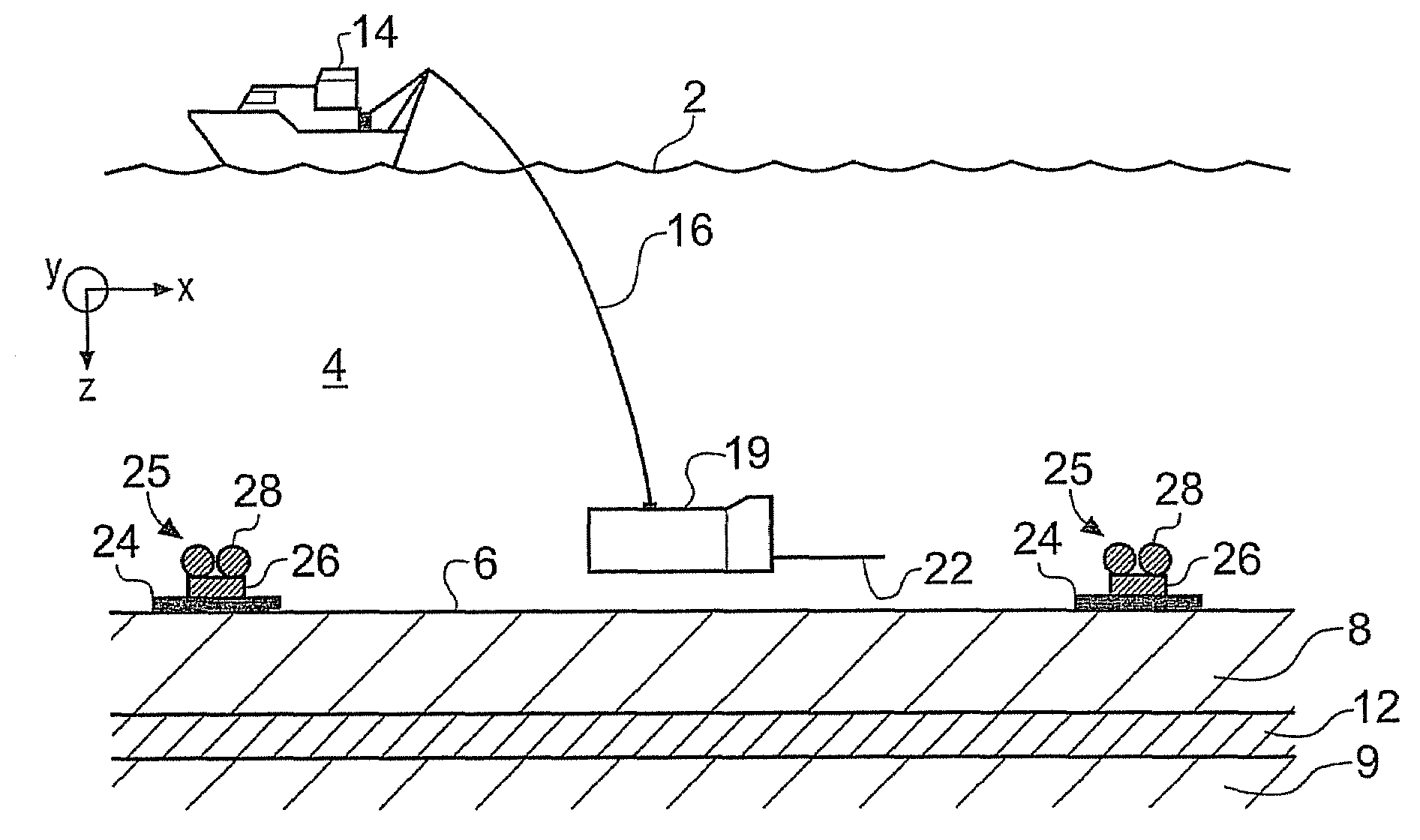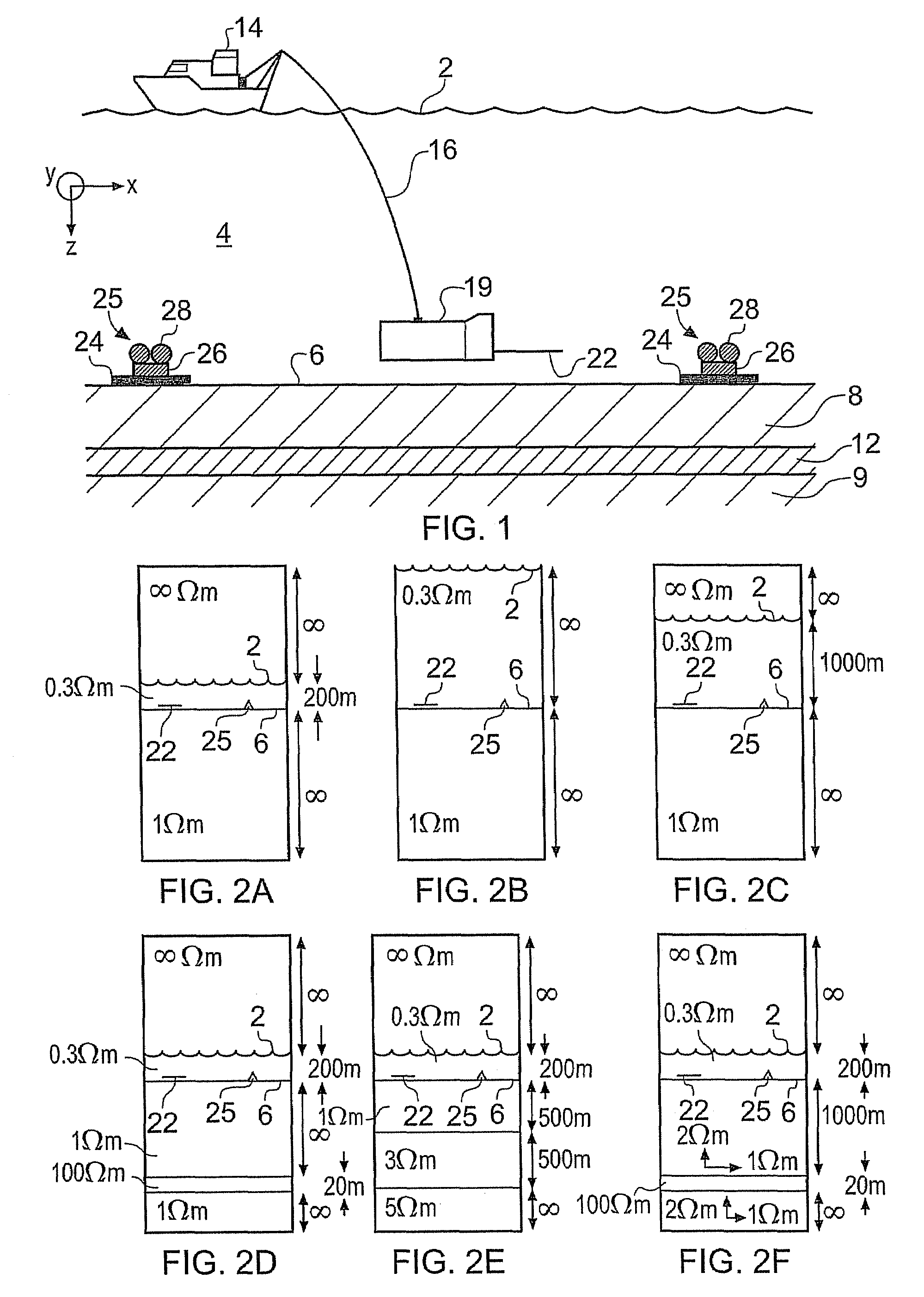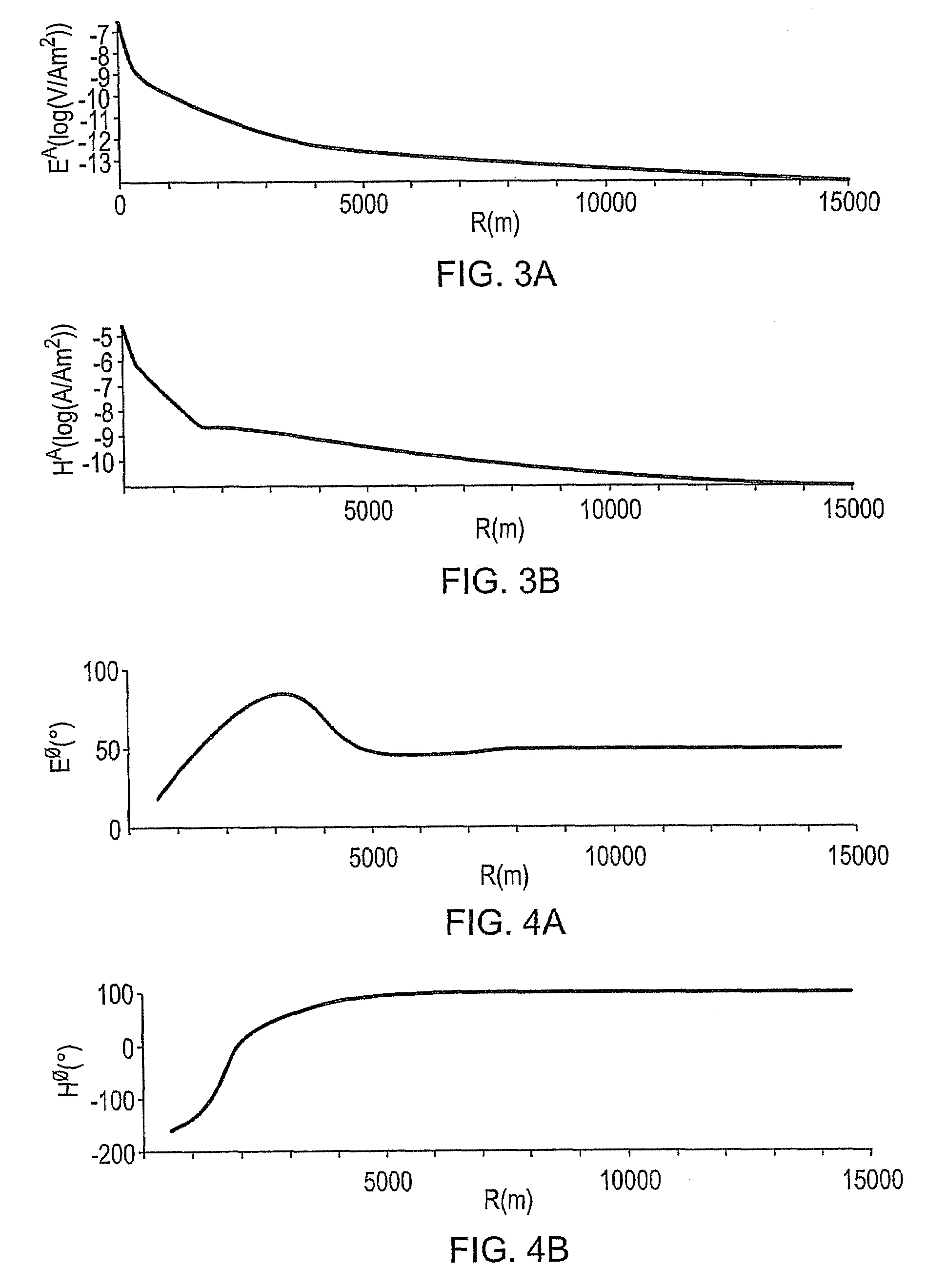Electromagnetic surveying
a technology of electromagnetic surveying and seafloor, applied in the field of seafloor electromagnetic surveying, can solve the problems of weaker em fields seen at the detector, high cost and time consumption, and often inability to distinguish between the different possible compositions of pore fluids within, and achieve the effect of improving the signal-to-noise level
- Summary
- Abstract
- Description
- Claims
- Application Information
AI Technical Summary
Benefits of technology
Problems solved by technology
Method used
Image
Examples
Embodiment Construction
[0075]FIG. 1 schematically shows a surface vessel 14 undertaking controlled source electromagnetic (CSEM) surveying of a subterranean strata configuration using standard apparatus [1] to obtain data suitable for analysis according to an embodiment of the invention. The subterranean strata in this example includes an overburden layer 8, an underburden layer 9 and a hydrocarbon reservoir 12. The surface vessel 14 floats on the surface 2 of a body of water, in this case seawater 4. A submersible vehicle 19 carrying a source (transmitter) 22 in the form of a horizontal electric dipole (HED) is attached to the surface vessel 14 by an umbilical cable 16. The umbilical cable provides an electrical, mechanical and optical connection between the submersible vehicle 19 and the surface vessel 14. The HED source 22 is supplied with a drive current such that it broadcasts an HED electromagnetic (EM) signal into the seawater.
[0076]One or more remote receivers (detectors) 25 are located on the sea...
PUM
 Login to View More
Login to View More Abstract
Description
Claims
Application Information
 Login to View More
Login to View More - R&D
- Intellectual Property
- Life Sciences
- Materials
- Tech Scout
- Unparalleled Data Quality
- Higher Quality Content
- 60% Fewer Hallucinations
Browse by: Latest US Patents, China's latest patents, Technical Efficacy Thesaurus, Application Domain, Technology Topic, Popular Technical Reports.
© 2025 PatSnap. All rights reserved.Legal|Privacy policy|Modern Slavery Act Transparency Statement|Sitemap|About US| Contact US: help@patsnap.com



